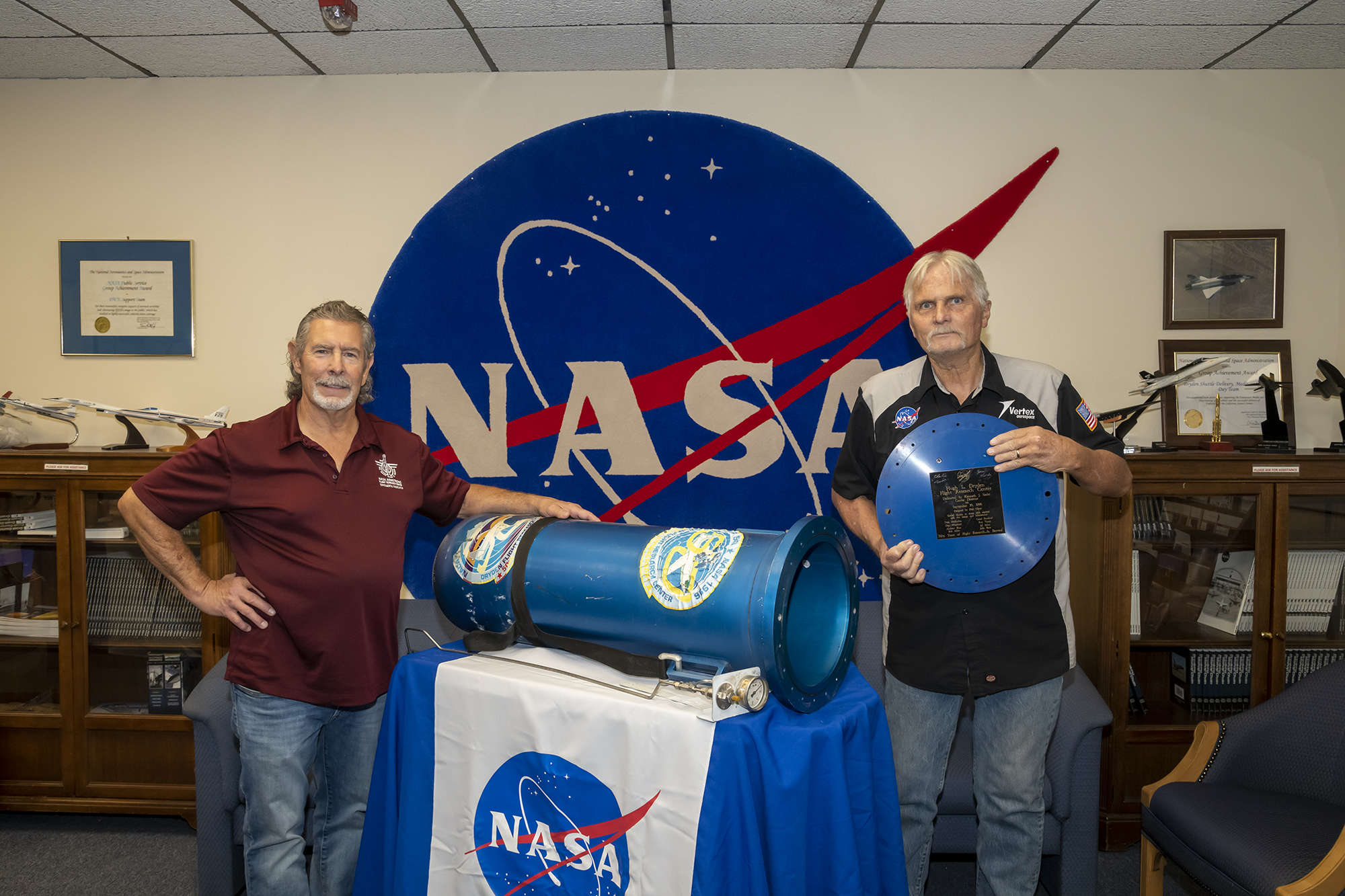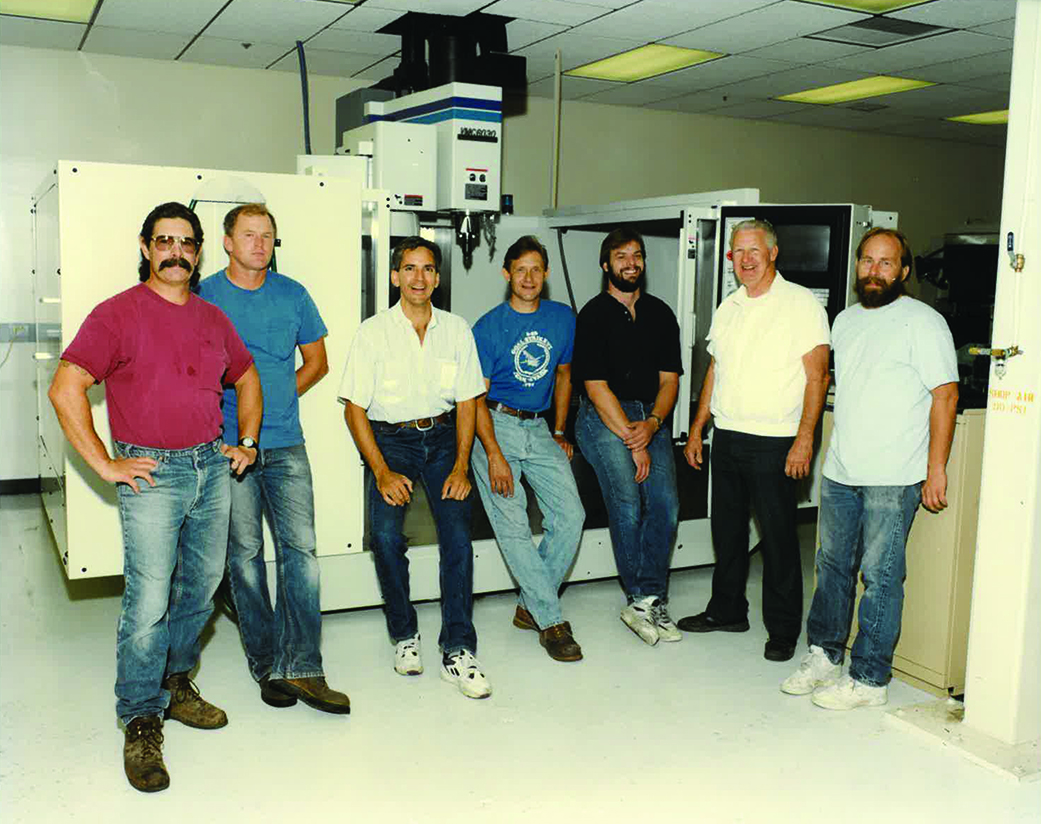
In 1995 at NASA’s Armstrong Flight Research Center in Edwards, California, a time capsule was needed. Machinists Andy Blua and Tom McMullen, and welders Ed Swan and Don Whitfield, were instructed to follow engineering drawings and build the container that would securely hold artifacts for a quarter century.
Once complete, the time capsule was loaded with the items provided by the center’s organizations and sealed on the center’s 50th anniversary in 1996.
Fast forward to Oct. 13 when the center is celebrating its 75th anniversary and the capsule items were unloaded. NASA Administrator Bill Nelson, NASA Deputy Administrator Pam Melroy, NASA Armstrong Center Director David McBride, and Deputy Director Pat Stoliker reviewed the treasurers stored for a new generation of center employees.
Blua and Whitfield, who still work at the center, were there as the artifacts they helped safely store were unpacked.
“I don’t often realize what I am working on, or its significance,” Blua said.
In fact, the men had forgotten all about the time capsule until recently when it was announced it would be opened. Whitfield added that they also had no idea what was in it.
“I was caught off guard,” Blua said. “I can’t believe it’s been 25 years.”

Budgets, plans and technical papers were in the capsule, which also included an aerial photo of the center, an 8-inchdata storage floppy disk that was no longer in use by the late 1970s, a punch card last seen routinely in the mid 1980s, a research aircraft fleet image, a VHS video, photos of research aircraft, and a staff photo from behind Hangar 4802.
In addition, other encapsulated items included Hispanic Heritage Program photos, the Flights of Discovery book, and the center’s strategic plan. Perhaps the most treasured part of the collection was about 30 entries that included text and drawings from local school children, called Aeronautics 2020, on what they thought the future would look like.
While the time capsule has secured items for 25 years and will be doing so again to open on the center’s 100th anniversary, Blua and Whitfield agreed they’d like to make improvements.
The original designer of the time capsule did not account for the diameter measurement of the container. It did not fit well into the X-1E cockpit, which is where it was stored just outside the center’s main administration building. In fact, it was hard to squeeze in and it was just as hard to get it out.
The men propose a minor redesign to cut the lid off, make the cylinder shorter, refurbish it and anodize (a process of adding a protective layer) it like the original to keep it in pristine condition. Once complete, Blua proposes adding a new plaque to recognize the additional people contributing to the time capsule’s longevity. Another idea Whitfield suggests is to check that it fits well before reloading it with new items for a future generation.
They also want the Fabrication Branch, which did not exist as it does 25 years ago, to add an item to the capsule. While it is uncertain what items might be selected for the time capsule, one thing is sure – it will stand the test of time.






























